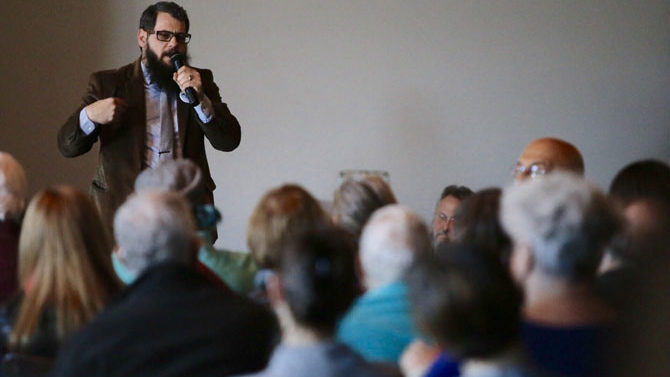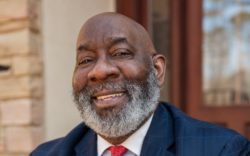It might seem strange that a neighborhood of mostly unremarkable 1950s ranch houses could be historic, but a push could be underway to create a historic district for Normaltown, where some residents want more control over development in the rapidly gentrifying area.
About 50 residents attended a town-hall meeting hosted by Athens-Clarke County Commissioner Tim Denson at Normal Bar last week to hear from a panel of experts on the pros and cons of a historic district. (Yes, it is technically considered historic—most of the buildings are over 50 years old.) Denson said he wanted to tackle the subject after getting numerous phone calls from constituents about homes being demolished. Concerns about affordability are also at the forefront as home prices have skyrocketed since the end of the 2008 recession in the formerly working-class neighborhood of artists, musicians, teachers and hospital employees.
“It’s not a one-size-fits-all solution,” Historic Athens Executive Director Tommy Valentine said, “but it’s a way for the community to have a say in how it grows and changes.”
A couple blocks of Oglethorpe Avenue—lined by older and statelier homes than the rest of the neighborhood—are already listed on the National Register of Historic Places. That means they’re documented in case they’re ever destroyed, but unlike a local historic district, the National Register offers no protection. If a local district were to move forward, Normaltown resident and ACC Historic Preservation Commission member Ellen Walker said she’d envision something larger, bounded roughly by Prince Avenue, Hawthorne Avenue, Broad Street and King Avenue. (She and other panelists said they were not pushing for a district and would only act if the neighborhood wanted it.)
If a historic district were created, property owners would have to seek permission from the HPC to make repairs, build additions or demolish structures. The tradeoff would be stricter rules for new development and more opportunities for public input.
“It’ll feel more like the place you moved into,” Valentine said. “But if you want to build a shed, if you want to build a granny suite, you might have to jump through some hoops.” However, HPC members said 96% of projects are approved in the end.
Several attendees in the mostly skeptical audience wanted to know how a historic district would affect affordability. Homeowners would get a seven-year tax freeze, but property values within historic districts also tend to rise faster.
It would, though, prevent developments like a widely disliked subdivision near the corner of Oglethorpe and Sunset Drive, where five-bedroom houses built just a few feet apart are selling for more than $600,000, said HPC member Heather Fletcher. Other similarly outsized infill houses are popping up all over the neighborhood, too. That type of development would not be approved by the HPC because it’s out of scale with the surrounding neighborhood of one-story, two- and three-bedroom houses, according to Fletcher.
Ultimately, the purpose of a historic district is to preserve something that’s historically valuable, and Walker argued that, although it bears little resemblance to the nearby Cobbham and Boulevard historic districts, Normaltown is historically valuable. “Almost all of our historic districts are rich white people,” she said. “I want to see something different, something that shows we value the gritty.”
There are alternatives, though, like an overlay district, which Fletcher described as a “historic district lite.” An overlay district would create a set of zoning guidelines specific to Normaltown.
Another question is how a historic district jibes with the “missing middle,” a proposal to add more housing stock by encouraging in-town development that’s denser than single-family homes but less dense than downtown’s block-sized apartment buildings. Valentine said they could be compatible. The “missing middle” report recently accepted by the ACC Commission notes that the concept is based on pre-World War II development patterns, before the rise of the automobile.
If there is an appetite to create a Normaltown historic district, the process will be a slow one of building support among residents, doing research and mapping out the boundaries. Historic districts are inevitably controversial, like the creation of one in Buena Vista Heights on the other side of Prince Avenue in 2013. “It takes so much effort, it’s more likely this won’t happen,” Valentine acknowledged.
Like what you just read? Support Flagpole by making a donation today. Every dollar you give helps fund our ongoing mission to provide Athens with quality, independent journalism.










